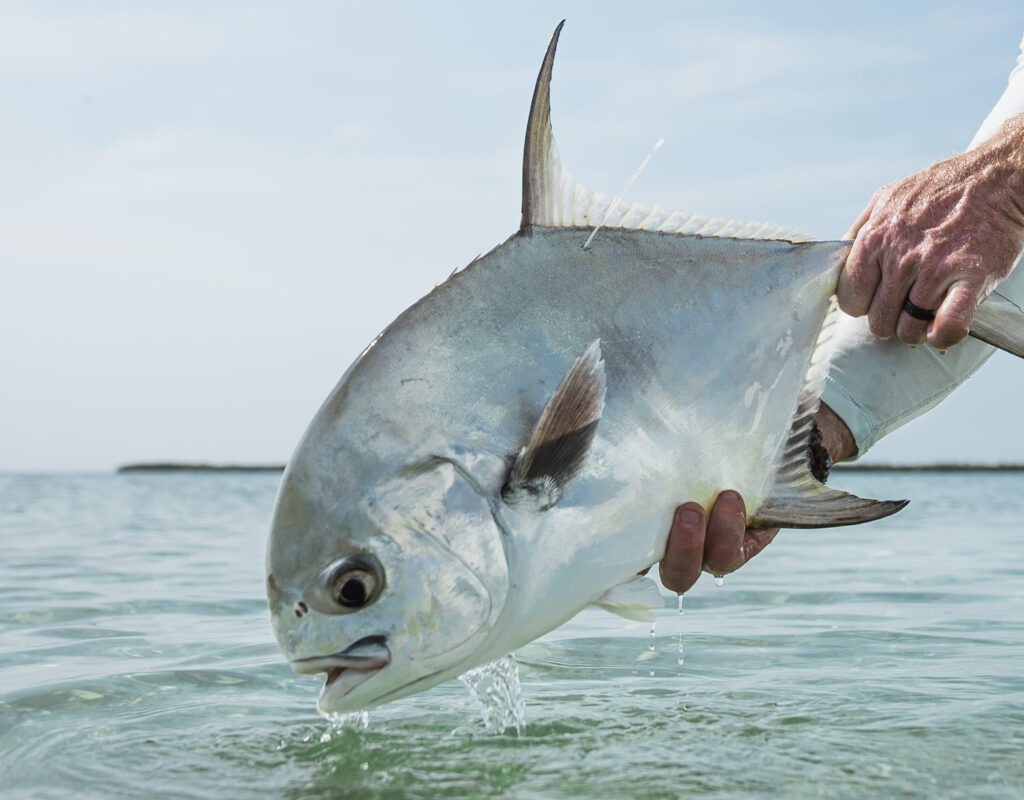Recent tagging research to track habitat use and movements of permit near Ambergris Caye, Belize, has been met with anger by some fishing guides.
While we understand the worry some guides may have about the possible impacts of tagging on permit, our previous work with permit in Belize, Mexico, and Florida, with bonefish in Belize, Mexico, Florida, and The Bahamas, and with tarpon in Belize, Florida, Mexico, the Gulf of Mexico, and southeastern US coast show that tagging has minimal impacts. For example, in previous research, Bonefish & Tarpon Trust has worked with fishing guides and anglers to tag more than 13,000 bonefish in The Bahamas, more than 7,000 bonefish in the Florida Keys, more than 9,000 bonefish in northern Belize and southern Mexico, more than 1,000 permit in the Florida Keys.
For bonefish, most of the recaptures of tagged fish occurred at the same location where they were tagged, or very near that location. This shows two things: 1) bonefish have small home ranges; 2) tagging does not cause bonefish to disappear and move to a different location. Permit recaptures in Florida show a similar pattern – most permit are recaptured very close to where they were tagged, though permit seem to have larger home areas than bonefish, and some permit move long distances. What was very revealing about these previous tagging studies on bonefish and permit is that many of the fish that were caught away from the tagging location were either migrating to spawn or at a spawning location.
Most important is that tag-recapture data (as well as other data that BTT collects on bonefish, tarpon permit), are essential for designing and implementing effective conservation and management. Effective conservation and management are impossible if we don’t have scientific data. Period.
We use nets to capture fish so that a large number of fish can be captured in a short amount of time – the more fish tagged, the more fish that can be recaptured, and the shorter the project. The tagging occurs for a limited period of time – enough time to get the data necessary for conservation measures – and then tagging is ceased. The bonefish tagging project in northern Belize and southern Mexico, has concluded because the data on movements and habitat use have been obtained.
Examples of how tagging information has helped to inform recent conservation include:
- The creation of five new national parks in The Bahamas to protect bonefish home ranges, spawning migrations, and pre-spawning locations
- The protection of spawning permit in the Florida Keys
- Identification and restoration of juvenile tarpon and snook habitats in Florida
- Creation of laws to make tarpon catch-and-release only in North Carolina
- Tagging data showed that bonefish from northern Belize and southern Mexico all migration to Robles Point for spawning, which is helping us to work with management agencies to improve management.
As anyone who fishes in Belize knows, the flats fishery around Ambergris Caye is under increasing threat from development, dredging, mangrove clearing, and wetland filling. Without scientific data, the people who depend on the flats fishery (guides, lodges, employees, and their families) won’t be able to defend the habitats that allow the fishery to exist. Anglers won’t have fishing opportunities. Our best chance for flats fishery conservation is to conduct studies to collect the data that we can use to push for better management, enforcement, and regulations.




